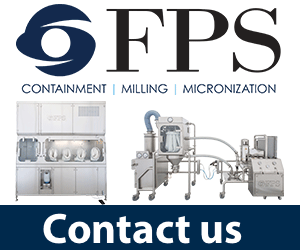"Investigators who conduct aseptic processing drug inspections for sterile products have a lot on their plates. From climbing into a full-body sterile Tyvek suit with goggles to conduct a walk-through, to spending long hours observing aseptic techniques, to reviewing large volumes of data; these inspections take extensive precision, experience and dedication," said Scott Gottlieb, commissioner of the US Food and Drug Administration (FDA), in a statement introducing the New Inspection Protocol Project (NIPP).
The NIPP is a scheme designed to modernise the agency's inspections programme with a new way of assessing, recording and reporting the data from surveillance and pre-approval inspections for sterile drug products.
Gottlieb explained: "Because of the importance of the data that we gather from these inspections, there’s increasing need to more efficiently collect and analyse the information we gather during inspections to give us even better and timelier insight on the state of quality in drug manufacturing facilities and promote the relevance of this information to our regulatory decisions."
The NIPP uses standardised electronic inspection protocols to collect data in a structured manner for more consistent oversight of facilities and faster and more efficient analysis of the findings. The protocols also include additional questions related to quality culture observed in facilities.
Gottlieb added: "The new tool is being applied to our inspectional work related to sterile injectable drugs, which have been the subject of sterility problems and shortages in the past. The primary focus of this new tool is to ensure a more streamlined and consistent coverage and reporting of our inspectional activities."
The FDA commissioner said the new protocols will not change the role of the investigator, which continues to be collecting, evaluating, and documenting objective facts about the state of pharmaceutical quality of drug manufacturers. Gottlieb explained: "Our inspectors are the leading edge of our critical public health protection mission. The goal of the new protocols is to make that work more thorough and efficient. The protocols provide a more structured and informative tool for completing inspections."
Processing surveillance and pre-approval inspections
The first phase of NIPP was aimed at developing a protocol that could be used during aseptic processing surveillance and pre-approval inspections.
Gottlieb said facilities using this processing technique to manufacture sterile drug products were a logical starting place "because of the significant impacts on patient safety if the quality of drugs that are intended for sterile injection are compromised". He also pointed at the challenges the agency have had in recent years related to quality issues that have – at times – led to shortages of sterile, parenteral drugs.
"With better and more consistent oversight of these manufacturing facilities, we hope to be able to spot problems earlier and implement mitigation steps that can avert dangerous drug shortages," Gottlieb said.
Tried and tested
The FDA conducted multiple pilots of the NIPP protocols to ensure that they would be consistent with current program objectives and integrate into the way investigators conduct inspections. Each new protocol version underwent extensive revision and refinement. "Much of this work was based directly on feedback received from our investigators, compliance officers and reviewers who participated in the pilots," Gottlieb said.
Gottlieb also explained that these aseptic processing drug inspection protocols for sterile drugs are the first of what the FDA plans to be a series of valuable new inspection protocols covering all dosage forms. "Our goal is to have them ready for full implementation within the next two years," he concluded.




